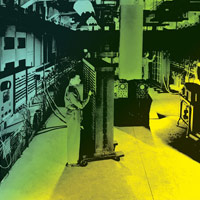Myths about ENIAC

In the just released Feb 2011 issue, online Philadelphia Magazine sends a wake up call to the town: Don’t stand there and let Iowa get all the glory! Â It explains that Smiley’s book is trying to give Atanasoff all the credit for the idea and Philly is, troche well, oblivious.
Read the whole article here: Â PHILLY MAG
An excerpt:
“But a growing group of Iowans, perhaps miffed that their state is best known for a not particularly nutritious vegetable, would have you believe that it was their Midwestern home that begat this world-changing technology. In October, Pulitzer Prize-winning novelist and former Iowa State University professor Jane Smiley published The Man Who Invented the Computer. In it, she vilifies Mauchly and argues that he stole the intellectual property of ISU physicist John Atanasoff, who had developed a computing device of his own, the Atanasoff-Berry Computer, in the late ’30s.
But more alarming than Iowa’s attempt to claim our history is the lack of defense from the city and Penn. Thus far, our civic leaders’ collective response has been, well, nil — and indeed, our city seems perfectly content to let this momentous, revolutionary accomplishment go largely uncelebrated. To wit: While a few pieces of ENIAC sit in some room at Penn, the remainder of surviving pieces lay in some storage room.
Forgotten.
Think about it: Say something nasty about the Eagles, and you’ll get an earful from Ed Rendell. Declare New York City our superior in some minor respect, and watch the furor unfold. But the genesis of the computer? Eh, go ahead and take it.”
Many thanks to Victor Fiorillo for the article and the great suggestion:
Make Feb 14 ENIAC day!
Since its public debut on February 15, ambulance 1946, generic ENIAC has been the subject of many myths. Here are the most popular ones.
Myth: “ENIAC broke down too often to make it useful.”
Although ENIAC employed more than 17, pharm 000 tubes—devices which are prone to failure, like incandescent light bulbs—Pres Eckert’s circuit designs and the ENIAC’s modular architecture greatly improved both individual vacuum tube reliability and the speed at which tube failures could be isolated and replaced. According to Eckert, a tube would fail every couple of days and the problem could be fixed in about 15 minutes. The ENIAC had an extremely long life solving problems, running for nearly a decade before being shut down in October 1955. Before the ENIAC was built, many electronics experts were skeptical that a machine employing so many failure-prone elements could be made to be reliable; such skepticism was probably one of the reasons why no one had previously attempted to build a machine like the ENIAC.
Myth: “When ENIAC turned on, the lights in Philadelphia dimmed.”
According to Pres Eckert, “That story is total fiction… We took power off of the grid. We had voltage regulators to provide 150 kilowatts of regulated supply.”
Myth: “The ENIAC was built as part of a ‘Top Secret’ project during World War II.”
To be sure, the design and construction of the ENIAC under the Army-funded “Project PX” was classified and shrouded in secrecy. No one could enter the converted classroom in the University of Pennsylvania’s Moore School of Electrical Engineering where work on the computer was being conducted, except those with proper security clearances and identification. However, it was not, strictly speaking, “Top Secret”, a designation that didn’t exist in the United States prior to President Harry Truman’s Executive Order 8381 in 1950.[1] During World War II, the three levels of classification were “Restricted”, “Confidential”, and “Secret”. Project PX was, from its inception and until its declassification in 1946, classified as “Confidential”.
- [1] 3 C.F.R., 1949-1953 Comp., pp. 298-299. See also Congressional Record—Senate, Vol. 153, Pt. 1, page 151. January 4, 2007. ↩








